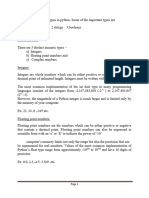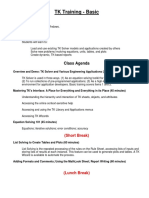0% found this document useful (0 votes)
5 views5 pagesClass 11th Chapter String
This document provides an overview of strings in Python, detailing their definition, traversal, indexing, slicing, operators, and various built-in functions. It explains how to create strings, access their characters, and manipulate them using different methods and operators. Examples are provided for each concept to illustrate their usage in Python programming.
Uploaded by
kunalmalik1616Copyright
© © All Rights Reserved
We take content rights seriously. If you suspect this is your content, claim it here.
Available Formats
Download as PDF, TXT or read online on Scribd
0% found this document useful (0 votes)
5 views5 pagesClass 11th Chapter String
This document provides an overview of strings in Python, detailing their definition, traversal, indexing, slicing, operators, and various built-in functions. It explains how to create strings, access their characters, and manipulate them using different methods and operators. Examples are provided for each concept to illustrate their usage in Python programming.
Uploaded by
kunalmalik1616Copyright
© © All Rights Reserved
We take content rights seriously. If you suspect this is your content, claim it here.
Available Formats
Download as PDF, TXT or read online on Scribd
/ 5























































































